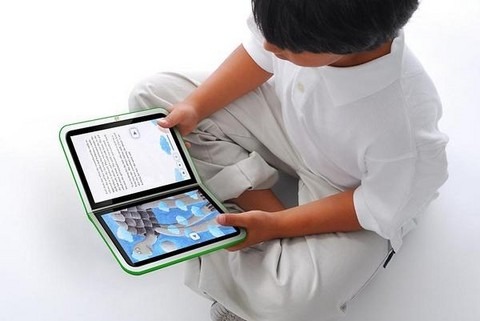OLPC XO-2 has native MultiTouch, haptic feedback likely
The OLPC team probably predicted that their ever-so-slick XO-2 renders would prompt some "is it feasible?" critique, mainly due to its inclusion of dual-touchscreens. Intended to fold down the middle like a book, the two screens would serve either as facing pages or as a screen and virtual keyboard. Pixel Qi, the company set up by former OLPC chief technology officer Mary Lou Jepsen, will be responsible for providing the display panels themselves, and she's been answering some questions on what functionality the XO-2 will carry and how a $20 touchscreen price-point is feasible.

According to Jepsen, the touchscreens' commercial viability is down to the way the MultiTouch is integrated into the LCD itself, rather than being added as a separate layer in the manner of the iPhone. That not only makes it cheaper to produce, but it increases image quality because there's no layer on top of the LCD. Jepsen also claims to have "a new architecture" that will "drastically cut" the power demands of the panels while also increasing readability; useful when the OLPC team are aiming for a mere 1 watt draw.
"I can't share our partners names at this time. We are working with large, tier-one laptop, cell phones, and e-book makers" Mary Lou Jepsen, PixelQi
Pen-input for the XO-2 is yet to be decided, although Foley describes it as "not that hard" to incorporate, and the PixelQi team is currently working on haptic feedback. That would give a physical response to on-screen controls, and could make a big difference in QWERTY keyboard usability.
